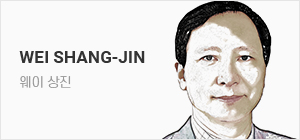 |
| 2023년 6월 15일 미국 로스앤젤레스 항구에서 화물선이 컨테이너를 하역하는 모습 [AP] |
In a pair of speeches in the spring, Treasury Secretary Janet Yellen and National Security Advisor Jake Sullivan set out a strategy for America‘s economic relationship with China. The two cabinet officials emphasized that the U.S. is not trying to keep China down, but that it would work to limit high-technology exports and investment that would enhance China’s war-fighting capabilities. They used the image of a “small yard with a high fence.” The “small yard” signifies that there should only be a few technologies that need to be controlled, and the “high fence” indicates that there will be serious restrictions on any transactions involving these technologies. Secretary Yellen noted that there are many areas of the economy in which China and the U.S. can continue to have mutually beneficial trade, investment, and scientific exchange. She characterized the strategy as aimed at “de-risking” rather than “de-coupling.
While the strategy is admirably clear in theory, in practice it is difficult to implement. So many technologies have dual use that it is hard to keep the yard small. Looking at the different measures that the U.S. has rolled out, they seem quite scatter-shot. First, there is the 25% import tariff imposed on about half of what the U.S. imports from China. This was imposed by President Trump but left in place by President Biden. This measure is certainly not targeted to a small yard because it covers a wide range of products, most of which are not high-tech. Second, there are restrictions aimed at particular companies such as Huawei. Some of this company‘s products are high-tech, but many are ordinary smart phones. The restrictions on sales of technology and components to Huawei have severely damaged the company. Third, some of the export controls are targeted to high-tech products, but in practice they discourage non-tech trade as well. The U.S. keeps adding measures, hence it is rational for firms to wonder whether products not sanctioned now, may become sanctioned in the future. Thus, there is spillover discouragement even when measures are narrowly targeted. The most recent example is a draft Executive Order that would limit U.S. investment in China in AI, cloud computing, and high-end semiconductors. But it is widely expected in the financial community that more sectors will be added in the future.
What do we actually observe in the trade data between the U.S. and China? Through the first half of 2023 U.S. imports from China were down 25% from the year-before. The U.S. economy is slowing down, and there has been a recent shift in demand away from goods towards services. In the immediate aftermath of the pandemic households had a lot of pent-up demand for goods such as autos, furniture, and electronic equipment. With that mostly satisfied, demand has now shifted to services such as travel, entertainment, and healthcare. So, it is natural for U.S. imports to soften. Overall imports in the first half were down 6% from the first half of 2022. Imports from the Pacific Rim, other than China, were down about the same (5%). U.S. imports from South Korea were unchanged from 2022 to 2023, while U.S. imports from Mexico actually increased 5%. Hence the big drop in U.S. imports from China is unusual and almost certainly goes beyond a dip in U.S. goods consumption to reflect at least partial de-coupling.
These patterns can be seen in China‘s trade data as well, which always differs somewhat from U.S. data for a variety of reasons. Cumulative January-June, exports to the U.S. were down 18% while exports to the EU were off only 7%. The U.S. economy is doing better than Europe, but the drop-off in demand for Chinese products was strongest from that source. There was some good news for China in the trade data as well -- a 2% increase in exports to the ten nations of ASEAN, reflecting a gradual shift away from Europe and the U.S. to regional partners. But, overall, China faces external headwinds in 2023. This can be seen clearly in the data for some major high-tech products: cumulative through June, exports of laptops were down 24%. Exports of smart phones were similarly down 14%.
The growing trade tension between China and the U.S. creates a dilemma for traditional allies like South Korea. South Korea has far more trade with China than with the U.S., which is natural given the size of the Chinese economy and its close proximity to Korea. Traditionally the relationship between South Korea and China has been vertical: South Korea exports more sophisticated products and components and has typically had a trade surplus with China. But with China‘s technological advance in electronics, machinery, and vehicles, the relationship has become more horizontal. That means that Korean and Chinese firms produce and trade similar products in a highly competitive atmosphere. In some sectors Korea has been losing out. Not long ago Korean car manufacturers had more than 10% of China’s car market, but with the emergence of Chinese electric vehicle brands the Korean share has dropped to 1%. In the process, Korea‘s trade surplus with China has turned into a deficit. In this horizontal competition, Korea is hampered by trade and investment restrictions coming from the U.S. Some Korean high-tech products involve American technology, and there are growing restrictions on the use of this kind of technology in trade and investment with China. South Korea is opting to stick closely to the U.S. for security reasons (and historical friendship) but as U.S.-China de-coupling expands, Korea will pay an economic price for this closeness.
U.S. friends such as South Korea, Taiwan, and Japan can play an important role in influencing American policy towards China. Some voices in the U.S. want complete separation with China, and this would be devastating economically and potentially lead to war. America‘s friends would do well to encourage the U.S. government to follow through on the strategy of de-risking rather than de-coupling and of keeping small the yard of restricted technologies. In general, America’s allies do not want to have to choose between China and the U.S. and it is helpful if they are vocal about their views.
지난봄에 있었던 잇따른 연설에서 미국 재닛 옐런(Janet Yellen) 미국 재무장관과 제이크 설리번(Jake Sullivan) 국가안보보좌관은 미·중 경제관계에 대한 전략을 제시했다.
미국 내각의 두 리더는 ‘미국은 중국을 억제하려는 것이 아니라 중국의 전쟁 수행능력을 강화할 수 있는 첨단 기술에 대한 수출과 투자를 제한하려는 것’이라고 강조하며 ‘높은 울타리가 쳐진 작은 마당’ 비유를 사용했다. ‘작은 마당’은 규제에 해당하는 기술의 수가 적다는 의미이고, ‘높은 울타리’는 규제에 해당하는 기술에 대해서는 모든 거래에 대해 강력한 규제가 있을 것임을 나타낸다.
옐런 재무장관은 이외의 많은 경제 영역에서는 미국과 중국이 호혜적인 무역, 투자 및 과학 교류를 지속할 수 있다고 언급하며 이 전략의 목표는 ‘디커플링(de-coupling·탈동조화)’이 아니라 ‘디리스킹(de-risking·탈위험)’이라고 설명했다.
이 전략은 이론상으로는 놀라울 만큼 명확하지만 실제로 구현하기는 어렵다. 매우 많은 기술이 민·군 겸용으로 사용되기에 마당을 작게 유지하기가 어렵고, 지금까지 미국이 내놓은 여러 조치를 보더라도 이는 산탄발사에 가까워 보인다.
첫 번째로, 미국은 중국에서 수입하는 품목 중 약 절반에 대해 25%의 수입관세를 부과한다. 이 조치는 도널드 트럼프 대통령 집권 때 시행됐지만 조 바이든 대통령 집권기에도 이를 유지하고 있다. 이 관세는 대부분 첨단 기술제품이 아닌 광범위한 제품을 대상으로 하므로 마당이 작다고 볼 수 없다.
두 번째로, 화웨이와 같이 특정 기업을 겨냥한 규제가 있다. 화웨이 제품 중 일부는 첨단 제품이지만 대부분은 일반 스마트폰이다. 화웨이를 대상으로 한 기술 및 부품 판매 제한으로 화웨이는 심각한 피해를 봤다.
세 번째, 일부 수출 규제는 첨단 기술제품만을 대상으로 하고 있지만 실제로는 기술 이외의 무역까지 억제한다. 미국이 계속해서 규제를 추가하는 상황에서 기업들은 ‘현재 제재 대상이 아닌 제품들도 나중엔 제재 대상이 되지 않을까’ 염려하고 있다. 대상을 좁게 설정했다 하더라도 파급효과가 존재하기 때문이다. 가장 최근의 예로, 미국의 행정 명령 초안을 들 수 있는데 이 명령은 인공지능(AI), 클라우드 컴퓨팅 및 첨단 반도체에 대한 미국의 대중(對中) 투자를 제한하는 것이지만 금융계에서는 앞으로 더 많은 부문이 추가될 것으로 예상하고 있다.
그렇다면 미·중 간 무역 데이터에서 실제로 관찰되는 것은 무엇일까? 미국의 2023년 상반기 대중국 수입은 전년 대비 25% 감소했다. 미국 경제는 둔화하고 있으며 최근에는 수요가 상품에서 서비스로 이동하고 있다. 팬데믹이 끝난 직후에는 그동안 억눌려왔던 자동차, 가구, 전자장비 등에 대한 가계 수요가 커졌다. 하지만 이 수요가 대부분 충족됨에 따라 수요는 이제 여행, 엔터테인먼트, 의료와 같은 서비스로 이동하고 있다. 따라서 미국의 수입량이 줄어드는 것은 당연한 결과다. 상반기 전체 수입량은 2022년 상반기보다 6% 줄었고, 중국을 제외한 환태평양 지역으로부터의 수입은 이와 비슷한 수준(5%)으로 감소했다. 한국으로부터의 수입은 2022년과 2023년 사이에 큰 변동이 없고, 멕시코로부터의 수입은 오히려 5% 증가했다. 따라서 대중국 수입이 크게 감소한 것은 이례적인 상황이다. 미국 상품 소비의 전반적인 감소세를 넘어 적어도 일부분 디커플링이 반영돼 있다는 것은 거의 확실하다.
이러한 패턴은 중국의 무역 데이터에서도 보인다. 여러 가지 이유로 중국의 데이터는 항상 미국 데이터와 다소 다르게 나타난다. 1~6월 누계 기준, 대미 수출은 18% 감소한 반면 대EU(유럽연합) 수출은 7% 줄어드는 데에 그쳤다. 미국 경제가 유럽보다 상황이 나은데도 중국 제품에 대한 수요는 미국에서 가장 강한 감소세를 보였다.

물론 이 데이터엔 중국에 좋은 소식도 존재한다. 아세안 10개국에 대한 수출이 2% 증가했고, 이는 중심이 점차 유럽과 미국에서 역내 파트너로 이동하고 있다는 것을 보여준다. 그러나 2023년에 중국은 전반적으로 대외적인 어려움에 직면해 있고, 이는 일부 주요 첨단 기술제품 데이터에서 명확하게 나타난다. 6월까지(누계 기준) 노트북 수출은 24% 감소했고, 스마트폰 수출은 14% 줄었다.
미·중 무역 긴장이 고조되면서 한국을 포함한 전통적인 동맹국들은 딜레마에 직면했다. 한국이 미국보다 중국과 교역량이 훨씬 많은 것은 중국의 경제 규모와 한국과의 근접성을 고려할 때 당연한 일이다.
과거 한국과 중국의 관계는 수직적이었다. 한국은 정교한 제품과 부품을 수출하고, 일반적으로 대중국 무역에서 흑자를 기록했다.
그러나 중국이 전자, 기계, 자동차 부문의 기술이 발전하면서 두 나라의 관계는 수평적으로 변화했다. 한국과 중국 기업이 경쟁이 치열한 분위기에서 유사한 제품을 생산하고 거래한다는 뜻이다. 일부 부문에서는 한국이 중국에 밀리고 있다. 얼마 전까지만 해도 한국 자동차 제조업체들은 중국 자동차시장의 10% 이상을 점유했지만 중국 전기차 브랜드가 등장하면서 한국의 점유율은 1%로 떨어졌다.
또 이 과정에서 한국의 대중 무역 흑자는 적자로 바뀌었다. 이러한 수평적 경쟁에서 미국발 무역 및 투자 규제는 한국에 걸림돌이 되고 있다. 한국의 일부 첨단 기술제품에는 미국 기술이 포함돼 있는데 미국 기술을 대중 무역 및 투자에 사용하는 것에 대한 제약이 증가하다. 한국은 안보상의 이유(또 역사적 우호관계 이유)로 미국과 긴밀히 협력하기로 선택했지만 미·중 디커플링이 확대됨에 따라 한국은 미국과의 친밀한 관계에 대한 경제적 대가를 치르게 될 것이다.
한국, 대만, 일본과 같은 미국의 우방국들은 미국의 대중국 정책에 영향을 미치는 중요한 역할을 할 수 있다.
미국 내 일부 목소리는 중국과의 완전한 분리를 원하고, 이는 경제적으로 파괴적일 뿐 아니라 잠재적으로는 전쟁으로 이어질 수 있다.
미국의 친구들은 미국 정부가 디커플링보다는 디리스킹 전략을 고수하고, 규제를 받는 기술의 범위를 작게 유지하도록 권장해야 한다. 대체로 미국의 동맹국들은 중국과 미국 중 하나를 선택해야 하는 상황을 원치 않으며, 이 국가들이 그들의 목소리를 내준다면 상황에 도움이 될 것이다.
bonsang@heraldcorp.com















